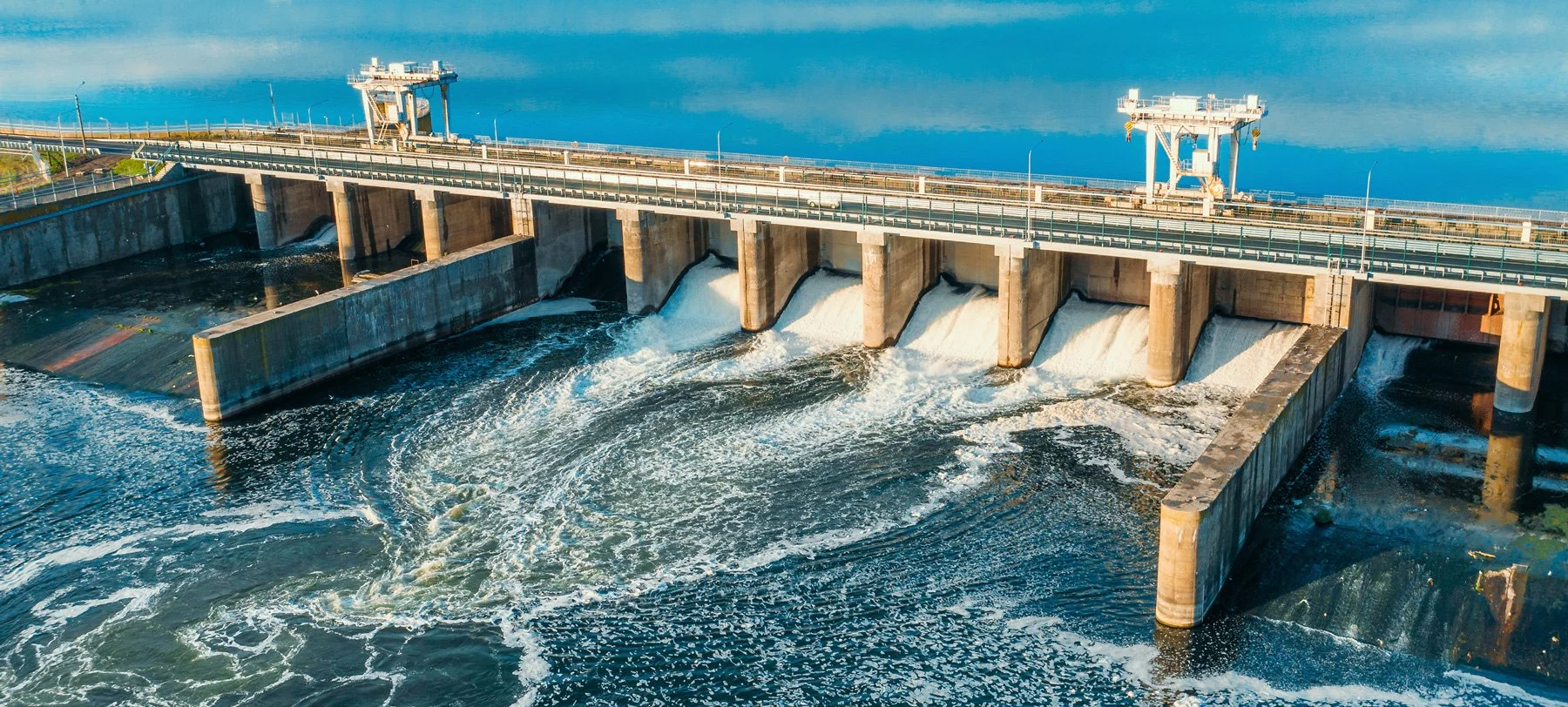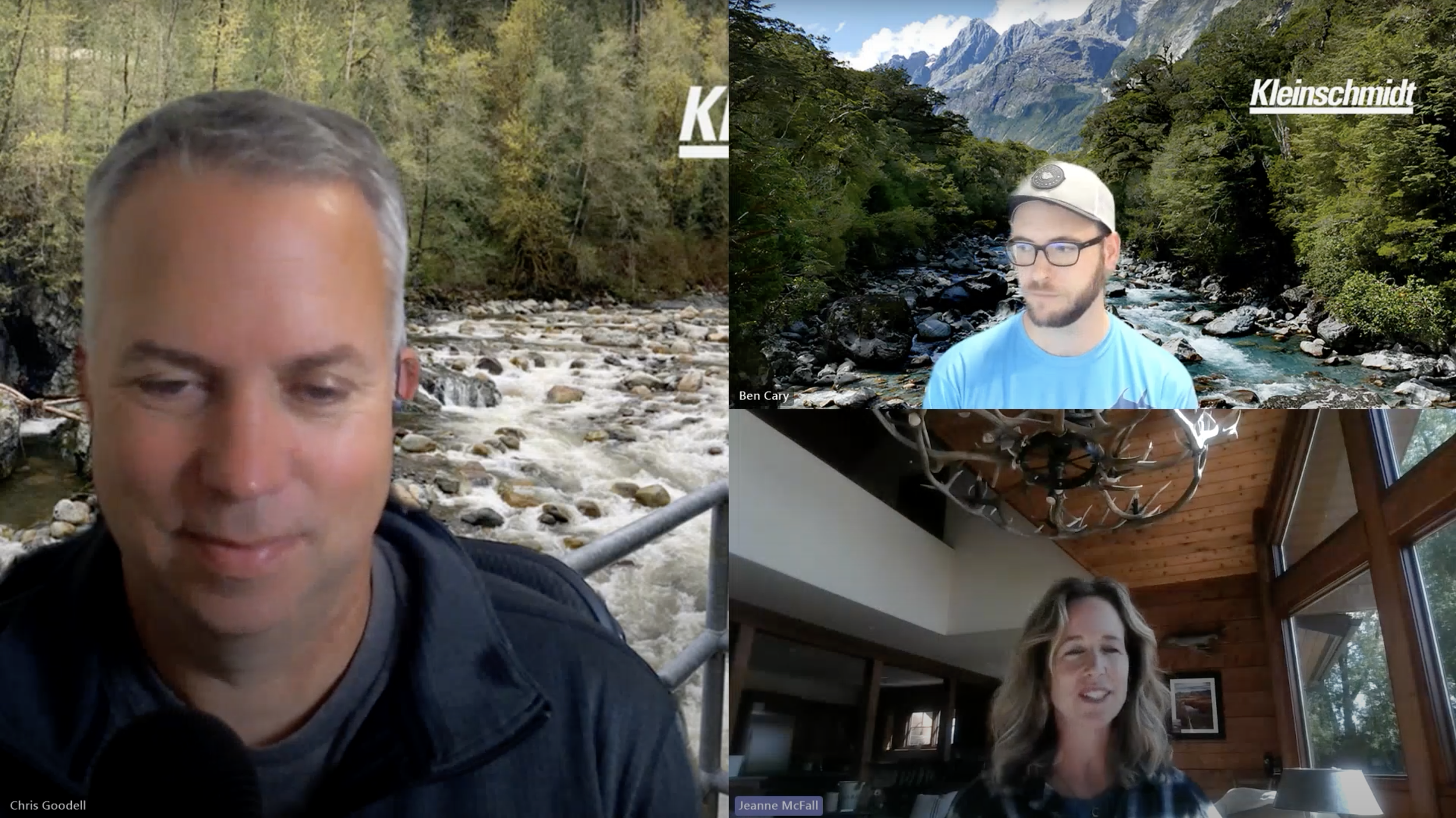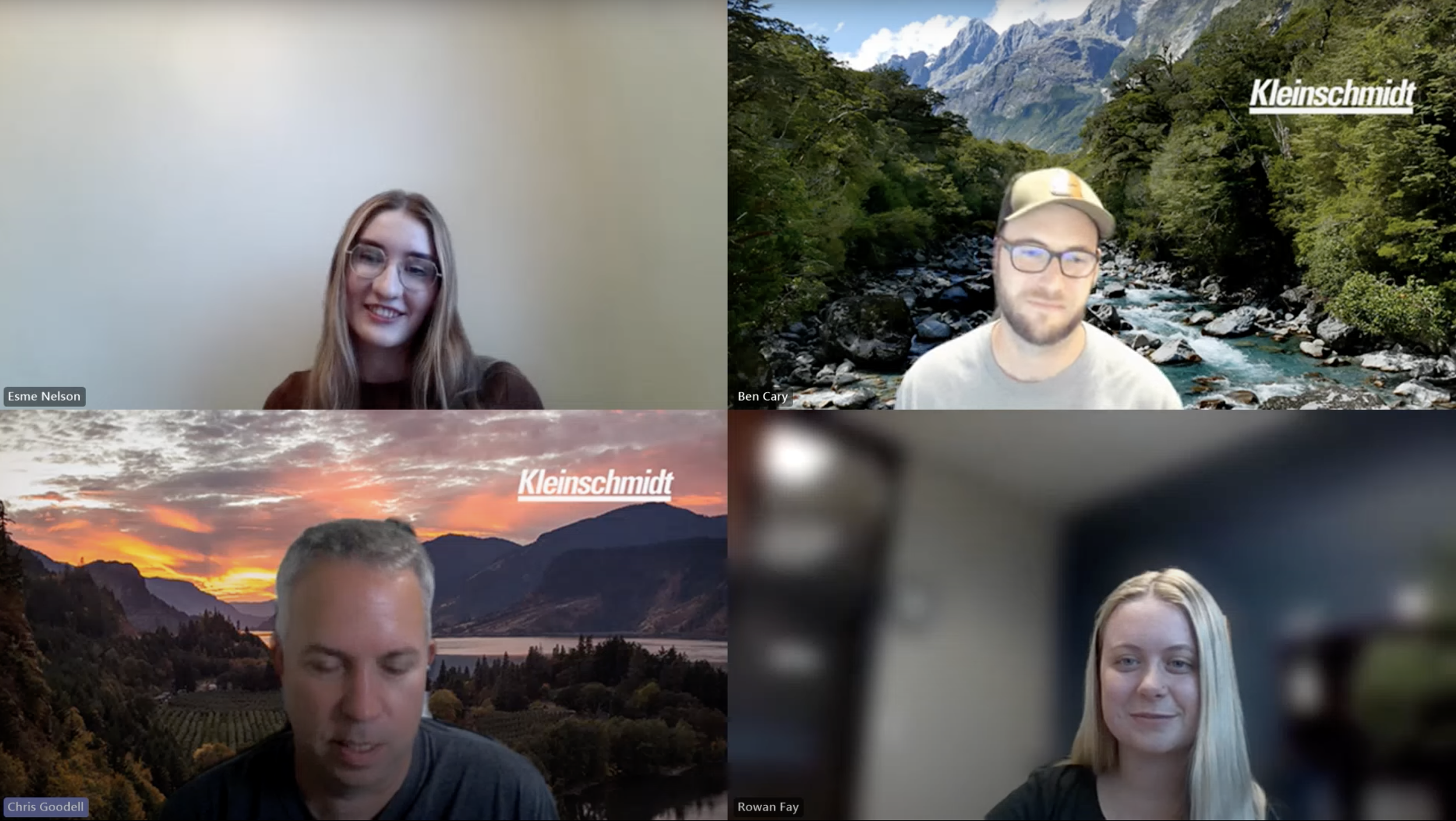Consulting Services
Ben and Chris both work full time at Kleinschmidt Associates as H&H Engineers.
To learn more about Kleinschmidt visit: Kleinschmidt Group | Home
Full Momentum Vodcast Series
Full Momentum Episode 38- Modeling Large Woody Debris
Full Momentum Episode 37- All Things Gates
Full Momentum Episode 36: HEC-RAS 2025 Alpha Release
Episode 35: Using HEC-RAS for Stream Restoration
Episode 34: New Graduates Experience
Episode 33: The Future of leveraging HEC-RAS with automation and AI
RAS Solution Blog
Virtual Flume
Ven Te Chow’s book “Open Channel Hydraulics” is arguably the gold-standard book for hydraulic engineers-especially those of us who model open channel flow.
Ven Te Chow’s book “Open Channel Hydraulics” is arguably the gold-standard book for hydraulic engineers-especially those of us who model open channel flow. The first publication of “Open Channel Hydraulics” came out in 1959, but even 65 years later, this book still holds up. I remember as a brand new hydraulic engineer-in-training, right out of college, discovering Chow’s diagrams of gradually varied flow water surface profiles, showing how water flows through channels under steep, mild, critical, horizontal, and even adverse slopes. These profiles illustrate where the water surface elevation would be along a channel in relation to normal and critical depth, the curve in the profile you would expect to see, and they were conveniently labeled “M1”, “M2”, “M3”, “S1, “S2”, etc for easy reference. The letter corresponds to the type of slope (mild, steep, etc.) and the number corresponds to where the water surface is relative to normal and critical depths. They are great visuals to help us predict what flow would look like under a variety of open channel flow conditions.
And to see these profiles replicated in real situations and in flume demonstrations really cemented the benefit of these visuals. Even today, I still recall and reference Chow’s profiles when reviewing and evaluating HEC-RAS model results. I should note that Chow credits Emmanuel-Joseph Boudin for first classifying and describing the different open channel flow profiles (M. Boudin, “De l’axe hydraulique des cours d’eau contenus dans un lit prismatique et des dispositifs réalisant, en pratique, ses formes diverses” The flow profiles of water in a prismatic channel and actual dispositions in various forms, Annales des travaux puliques de Belgique, Brussels, vol. 20, pp. 397-555, 1681-1862.)
Having a scaled flume model is another great way to demonstrate gradually varied profiles. If you’re lucky enough to have access to a flume, you know what I’m talking about. Here’s a photo of the Qual-E Flume that Zach Taylor and I built about a year ago (OK, mostly designed and built by Zach, but I did turn a few wrenches for him).
Figure 2. Kleinschmidt’s QUAL-E Flume. Designed and built by Zach Taylor, P.E.
Notice the “M3” curve coming out of the gate on the upstream side, followed by a hydraulic jump transition to an “M1” curve, very similar to Chow profile (e) shown in Figure 1. However, not everyone has a flume to play around with. And even with a flume, it can take some time to change the flume slope, adjust the discharge, add in structures, etc. etc.
I recently taught an HEC-RAS class in Oslo, Norway. Great class and great people. As always, I thoroughly enjoy all things Norway. If you haven’t been and you get a chance to visit Norway, I highly recommend it. Halvor Kjærås was an attendee of this recent HEC-RAS course. He pulled me aside during one of the breaks to show me a project he’s working on. Needless to say, I was very impressed and immediately saw the benefit of his work to our river modeling community. Halvor has developed a series of “virtual” flume models. They are nice visuals of the same thing Chow presented in his book, but so much more. They’re interactive, so you can change things like slope, roughness, gate openings, grade breaks, discharge, downstream controls, etc., etc., all the while seeing how the water surface profile relates to normal and critical depth. And the changes in the water surface profiles happen in real-time. As Halvor puts it, these are “really useful for explaining hydraulic principles and as a hands-on digital lab.” I couldn’t agree more!
Here are just a couple of examples.
Figure 3. Virtual Flume Animation – “Hydraulic Control”, Courtesy Halvor Kjærås
Figure 4. Virtual Flume Animation – “Flow Over a Step”, Courtesy Halvor Kjærås
These interactive virtual flume demos solve the gradually varied flow equations (same as HEC-RAS 1D) for steady flow in a rectangular channel in real-time as you make adjustments. Halvor wrote all of these using JavaScript, so they’re all available through any web browser. Halvor says “The program is designed to illustrate hydraulic principles and build intuition rather than provide exact numerical values. I encourage users to experiment with the demos to see how water reacts to different conditions. Perhaps you even learn something new.” He’s still developing these and welcomes feedback and suggestions.
You can contact Halvor with constructive feedback at halvorkjaras@gmail.com, but keep in mind this is a spare-time project for him.
Here are all the virtual flumes that Halvor has available. Have fun!
Normal depth
https://ironigardinen.net/hydraulics/gvf/normalDepth.html
Critical depth
https://ironigardinen.net/hydraulics/gvf/criticalDepth.html
Gradually varied flow
https://www.ironigardinen.net/hydraulics/gvf/gradually.html
Hydraulic control
https://ironigardinen.net/hydraulics/gvf/control.html
Hydraulic jump
https://ironigardinen.net/hydraulics/gvf/hydraulicjump.html
Flow over a step
https://ironigardinen.net/hydraulics/gvf/step.html
Location of control section (compound systems)
https://ironigardinen.net/hydraulics/gvf/controlsection.html
Sluice gate
https://ironigardinen.net/hydraulics/gvf/sluicegate.html
Choking
https://ironigardinen.net/hydraulics/gvf/choking.html
Drop
https://ironigardinen.net/hydraulics/gvf/drop.html
Parshall flume
https://ironigardinen.net/hydraulics/gvf/parshallflume.html
Rating curve
https://ironigardinen.net/hydraulics/gvf/ratingCurve.html
Spillway submergence (Norwegian)
https://ironigardinen.net/hydraulics/gvf/overlopskapasitet.html
Side channel spillway (Norwegian)
https://ironigardinen.net/hydraulics/gvf/samlekanal.html
A little bit about Halvor Kjærås:
I graduated from the Norwegian University of Science and Technology (NTNU) in 2012 with a Master of Science degree in river hydraulics and civil engineering. I worked for six years as a consultant for Sweco, primarily designing and reassessing concrete and rockfill dams. However, my main interest was in hydraulics, and I seized the opportunity to pursue a PhD on hydraulic methods to improve downstream passage of migrating fish at hydropower intakes. Today I work at Norconsult, focusing almost solely on hydraulics, including inundation mapping, design of tunnel spillways, river restauration, and fish migration projects.
During my PhD work, my duties involved teaching the introductory course in hydromechanics for second-year students. From my observations, both from my students and my own learning experiences, I recognized the significant learning advantages offered by the hydraulic laboratory. Physically manipulating the water flow, bottom slope and the downstream depth provide immediate feedback , which builds intuition more effectively than both blackboard explanations, manual calculations, and HEC-RAS.
However, providing 200 students with access to a hydraulic lab is expensive, so I sought to find a digital solution. I was surprised to find no existing resources, so I decided to develop my own program. The program solves the gradually varied flow equations (the same equations used in HEC-RAS 1D) for steady flow in a rectangular channel . The water surface is calculated in real-time as users manipulate markers for water surface and gate openings and adjust the sliders controlling flow and roughness coefficients. I wrote the program in JavaScript so it can run natively in web browsers. As a self-taught programmer, I acknowledge there will be bugs.
The program is designed to illustrate hydraulic principles and build intuition rather than provide exact numerical values. I encourage users to experiment with the demos to see how water reacts to different conditions. Perhaps you even learn something new.
Multiple Opening Analysis
Did you know that if you have a bridge opening and one or more culverts at a single river crossing a Multiple Opening Analysis is required?
Did you know that if you have a bridge opening and one or more culverts at a single river crossing a Multiple Opening Analysis is required? The Multiple Opening Analysis has been an option in HEC-RAS for 1D modeling as long as I can remember. It’s a great way to let HEC-RAS figure out flow distributions between bridge openings, culverts, and conveyance zones, as well as the resulting headwater elevation upstream of the crossing. It requires the users to enter “stagnation limits” to define zones of influence for the different openings. You can even provide what’s called a “floating” stagnation limit, effectively giving HEC-RAS a range of stagnation point locations, allowing HEC-RAS to figure out the stagnation limits through an optimization scheme. Figure 1 shows the upstream face of a crossing with a bridge opening and some piers (middle of the crossing), as well as a culvert group of five barrels (on the left side) and a secondary bridge opening (right side). This comes from HEC-RAS Example Data Set “Multiple Openings – Example 5”, MULTOPEN.prj from the HEC-RAS Applications Guide.
Figure 1. Multiple Opening Analysis
The red vertical dashed lines represent the stagnation limits that the user provides, breaking the crossing into three flow zones for HEC-RAS to work with, one for each opening group. Notice zones 1 and 2 and zones 2 and 3 overlap, using the “floating stagnation limits” technique. This communicates to HEC-RAS that you think the stagnation point is somewhere in the “overlap” zone, but you’ll let HEC-RAS use its optimization scheme to figure out the best place for it.
That’s about as far as I want to go with the multiple opening analysis procedure for this post. To learn more about this approach, read up in Chapter 6 of the HEC-RAS User’s Manual and Chapter 9 of the HEC-RAS Hydraulic Reference Manual. However, I want to bring up a very important and often overlooked requirement.
If you have a 1D model with a bridge opening and culverts, using the multiple opening analysis is REQUIRED! While the manual states that if you have a bridge opening and culverts in the same crossing you can use the multiple opening analysis, it doesn’t explicitly say you have to use the multiple opening analysis. And in the software itself, if you build a crossing with a bridge opening and a culvert, it won’t provide you with a warning if you don’t use the multiple opening analysis. It will run as if nothing’s wrong, give you some output and off you’ll go, never the wiser. But here is what happens. If you build a bridge in HEC-RAS, and then you add a culvert, HEC-RAS will change that crossing from a bridge crossing to a culvert crossing. As soon as that happens, the bridge opening is no longer recognized by HEC-RAS. Even though it is visibly still there, RAS will not consider the bridge opening at all in the computations.
Let’s take the Single Bridge – Example 2 (BEAVCREK.prj) example data set from the Applications guide. I’ve removed the bridge piers for this demonstration (Figure 2). Notice in the Title, over each cross section it’s labeled “Bridge” in the parentheses.
Figure 2. Single Bridge Opening
Now as soon as I add in a 5 foot by 10 foot box culvert, the label in the parentheses changes to “Culvert” in this zoomed in view (Figure 3). Notice I had to switch my ineffective flow areas to “multiple blocks” to provide conveyance for the culvert.
Figure 3. Bridge Opening with 5-foot by 10-foot Relief Culvert
So HEC-RAS now considers this a culvert, not a bridge. That bridge opening might as well be filled in, because HEC-RAS won’t consider it at all in the computations. Not sure you believe me? Let me show you the water surface profile results of these two geometry setups (Figure 4). Notice that the geometry with the relief culvert added in resulted in a headwater almost 5 feet higher than without the relief culvert (i.e. the bridge on its own). The relief culvert should reduce the headwater elevation, not increase it by several feet.
Figure 4. Comparison Water Surface Elevation Results with and without Relief Culvert
Another clue can be found in the detailed output table (Figure 5). Notice first, there is no longer a Bridge output table type.
igure 5. Detailed Output Table – No Bridge Type
And if you check the flow distribution in the culvert detailed table, you can see for the 10,000 cfs total flow, 9,508.63 cfs is weir flow and 491.37 is culvert flow (Figure 6). There is none left for the bridge opening.
Figure 6. Detailed Output Table showing Flow Distribution
Again, HEC-RAS is not considering the bridge opening at all, even though it is clearly included in the geometry (see figure 2). There were no warning messages during run-time and nothing in the Summary of Warnings Errors and Notes to let us know, “Hey, head’s up, RAS is not considering that big bridge opening you have at River Station 5.4”.
So, for a crossing with a bridge opening and at least one culvert, it is REQUIRED to use the multiple opening analysis. Why did I emphasize the word REQUIRED? Quite simply I don’t think a lot of RAS modelers know that you cannot model a bridge opening and a culvert in a single 1D crossing without it. In fact, I recently stumbled across a FEMA model that was used in the development of a Flood Insurance Study that has been around for decades. It had this exact same problem and the water surface profile that was published was overestimating the headwater elevation above the crossing by over three feet! Bottom line, if you have multiple openings and you forego the multiple opening analysis, the answer will be wrong.
So let’s rerun the model using the multiple opening analysis and see what happens. In Figure 7, you can see I’ve allowed the stagnation point to “float” so that HEC-RAS can use its iterative approach to balance energies for determining the best location. Alternatively, you could set the stagnation limits by avoiding an overlap. That way the non-overlapped line between the established flow zones becomes the final stagnation point and HEC-RAS doesn’t not need to iterate to determine it computationally.
Figure 7. Multiple Opening Analysis
And the results prove to be much more realistic as shown in the water surface profile plot (Figure 8) where the headwater drops slightly with the multiple opening approach geometry compared to the bridge only geometry (as it should). The highest water surface profile in this plot represents the bridge opening and culvert without the multiple opening analysis and demonstrates the problem with foregoing the multiple opening analysis when you have both a bridge opening and one or more culverts in the same crossing.
igure 8. Comparison Water Surface Elevation Results with and without Relief Culvert (Multiple Opening Analysis)



















